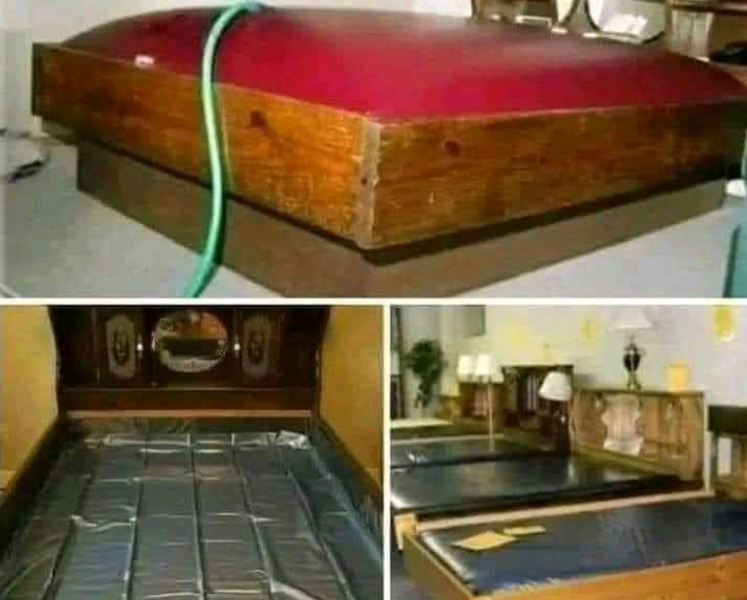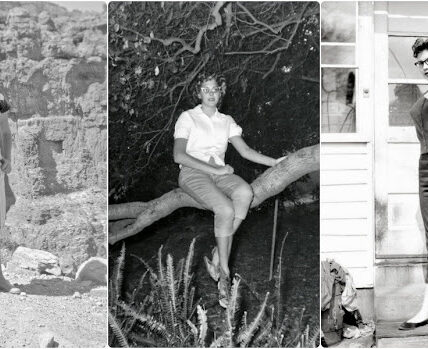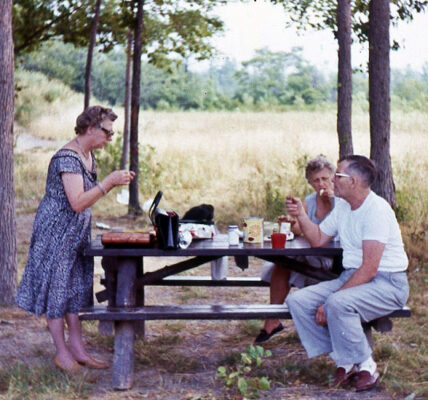The modern waterbed made its debut in 1968, when Charles Hall, a design student in San Francisco, sought to create a revolutionary form of comfort. Initially aiming to design a water-filled chair, Hall’s experimentation led to the creation of a bed that could uniquely mold to the body. His innovative design, crafted from durable vinyl that could safely contain water, provided a soft, wave-like surface ideal for both comfort and support.
By 1971, Hall patented his invention under the title “liquid support for human bodies,” and the waterbed industry took off. Advertised as a symbol of both relaxation and romance, the waterbed captured the imagination of the public and became a staple in American homes. Promising restful sleep and a touch of luxury, it quickly became a cultural sensation.
Why Waterbeds Were So Appealing: The Magic of Floating Comfort

One of the waterbed’s strongest selling points was its unique ability to relieve pressure on the body, offering a sensation akin to floating. This quality appealed especially to people with back pain, joint issues, or other conditions that made traditional mattresses uncomfortable. The even weight distribution provided by the water-filled mattress helped to alleviate pressure points, reducing discomfort and promoting a restful night’s sleep.
For many, this floating effect was a revelation. By the 1980s, the waterbed’s health benefits and novel comfort had helped it capture 22% of the mattress market, making it one of the most popular sleep solutions of its time.
Hard-Sided vs. Soft-Sided Waterbeds: Understanding the Two Main Types
Waterbeds were available in two main types, each with its own design and advantages:
- Hard-Sided Waterbeds: These waterbeds were built with a wooden frame that held the water-filled vinyl mattress in place. The sturdy frame helped maintain the waterbed’s signature structure and floating experience. However, hard-sided waterbeds were often bulky and required disassembly and draining to be moved.
- Soft-Sided Waterbeds: Soft-sided waterbeds were designed to look more like conventional mattresses, with a water-filled core surrounded by foam and fabric. This design allowed the bed to fit into regular bed frames, making it easier to incorporate into any bedroom style. The soft-sided version also provided the benefits of a waterbed without the heavy, wooden frame, offering a more practical and versatile option for many households.
Both types of waterbeds allowed users to control the temperature of the mattress with a heating pad, an added bonus in colder climates. Adjustable warmth enhanced the comfort, especially in winter, adding to the waterbed’s appeal.
Challenges of Owning a Waterbed: The Not-So-Glamorous Side
While the waterbed provided unique comfort, it wasn’t without its challenges. Filling the bed was often a chore, requiring a garden hose to be brought indoors. Once filled, the bed became extremely heavy, making it difficult to move or rearrange. Any leaks or punctures required quick repairs to avoid water damage to the room.
Heating costs were another issue, particularly in colder climates where the heating pad needed to run constantly to maintain the bed’s temperature. Additionally, many landlords were wary of allowing waterbeds in apartments, fearing leaks and the added weight on upper floors.
The Waterbed and the 1970s Lifestyle: A Cultural Phenomenon
The waterbed entered the market during a time of social and cultural transformation. The 1970s celebrated freedom and relaxation, and the waterbed became emblematic of this era’s laid-back lifestyle. Advertisements often promoted the waterbed as the ultimate combination of comfort and romance, with a hint of risqué appeal.
Celebrities, musicians, and icons of the time embraced the trend. Even Hugh Hefner, the founder of Playboy, famously endorsed waterbeds, solidifying their reputation as symbols of luxury and indulgence. The waterbed became a fashionable statement piece, representing more than just a mattress; it embodied the spirit of the times.
The Decline of the Waterbed: From Mainstream to Niche Market
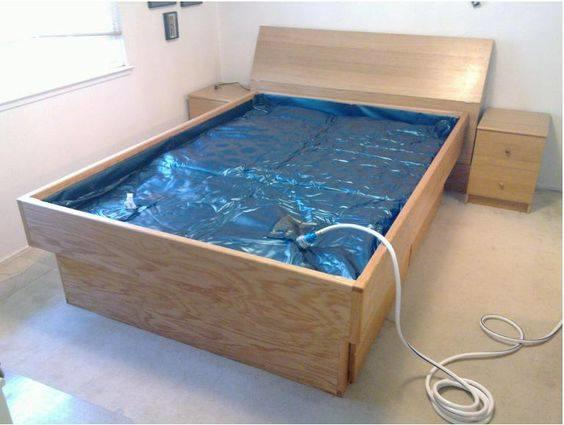
Despite its initial popularity, the waterbed began to lose its appeal in the late 1980s. The novelty wore off, and the practical challenges started to outweigh the benefits for many users. The bed’s setup and maintenance proved inconvenient, while newer mattress technologies, such as memory foam and pillow-top designs, offered comparable comfort with less hassle.
By the early 2000s, waterbeds had faded from the mainstream, making up less than 5% of the mattress market. Today, waterbeds remain a niche product, popular with a dedicated fanbase that values their unique comfort and nostalgic appeal.
Modern Innovations: Waveless and Soft-Sided Waterbeds
While traditional waterbeds may no longer be mainstream, they’ve evolved with modern innovations to remain relevant. Today’s waterbeds include options like soft-sided and waveless designs that address some of the issues associated with the original models. Waveless waterbeds minimize the sloshing movement by using baffles or fiber layers inside the mattress to create a more stable sleeping surface.
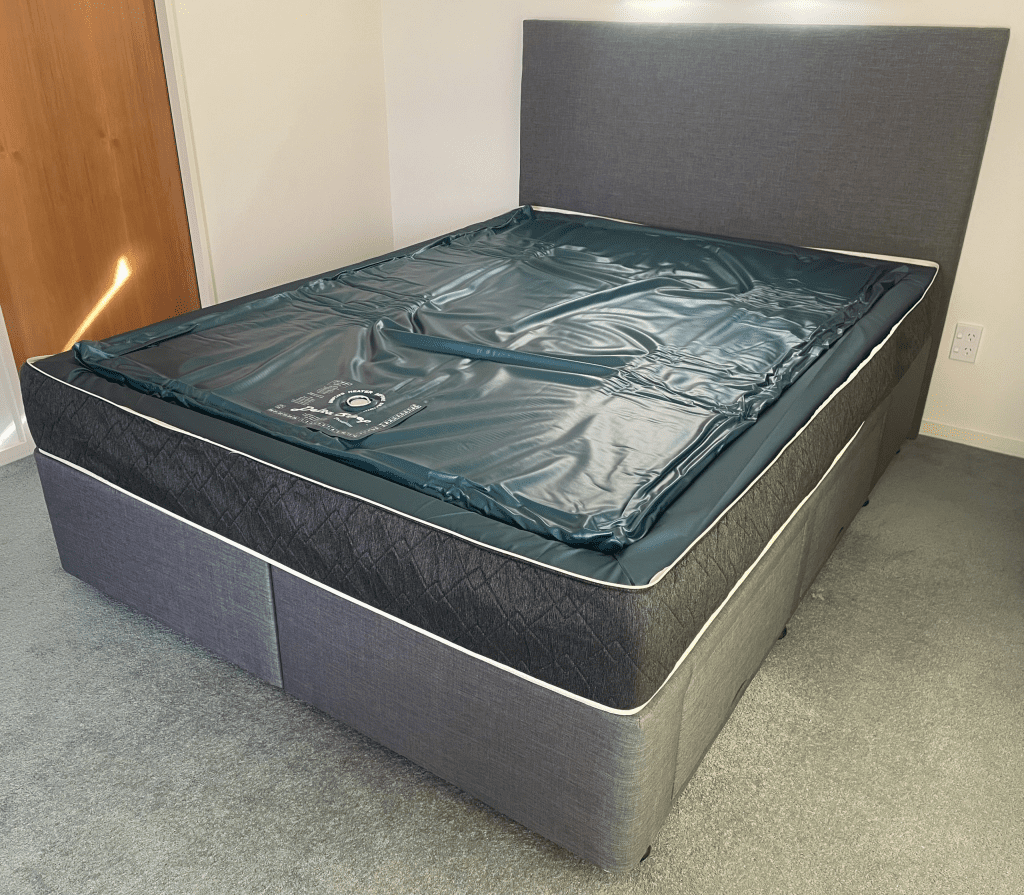
These improvements make modern waterbeds a viable choice in specialized settings, such as healthcare, where pressure-relieving properties are beneficial. Waterbeds are even used in some farming operations to improve animal comfort, showcasing their versatility beyond human sleep.
The Waterbed’s Lasting Legacy in Comfort and Culture
Though it may no longer dominate the mattress market, the waterbed has left an indelible mark on sleep technology and popular culture. It redefined comfort, offering a new approach to sleep that influenced the development of modern mattresses. The idea of customizing a bed to relieve pressure and enhance sleep paved the way for innovations that continue to shape the industry today.
For those who remember the 1970s and 1980s, the waterbed is a nostalgic symbol of a unique era. It may no longer be a common sight in bedrooms, but it remains an icon of its time—both for its distinctive comfort and for the memories it evokes of a period when sleep, relaxation, and style converged in one unforgettable product.
Conclusion: The Waterbed’s Journey from Trend to Treasure
The waterbed’s story is one of innovation, popularity, and adaptation. From its rise as a cutting-edge sleep solution to its status as a nostalgic icon, it transformed the way people thought about comfort and sleep. While it may no longer be the trendsetter it once was, the waterbed’s legacy lives on in the minds of those who embraced its gentle waves and in the evolution of sleep technology. The waterbed may have taken a backseat in today’s market, but it will forever be remembered as an emblem of relaxation, cultural change, and timeless comfort.
